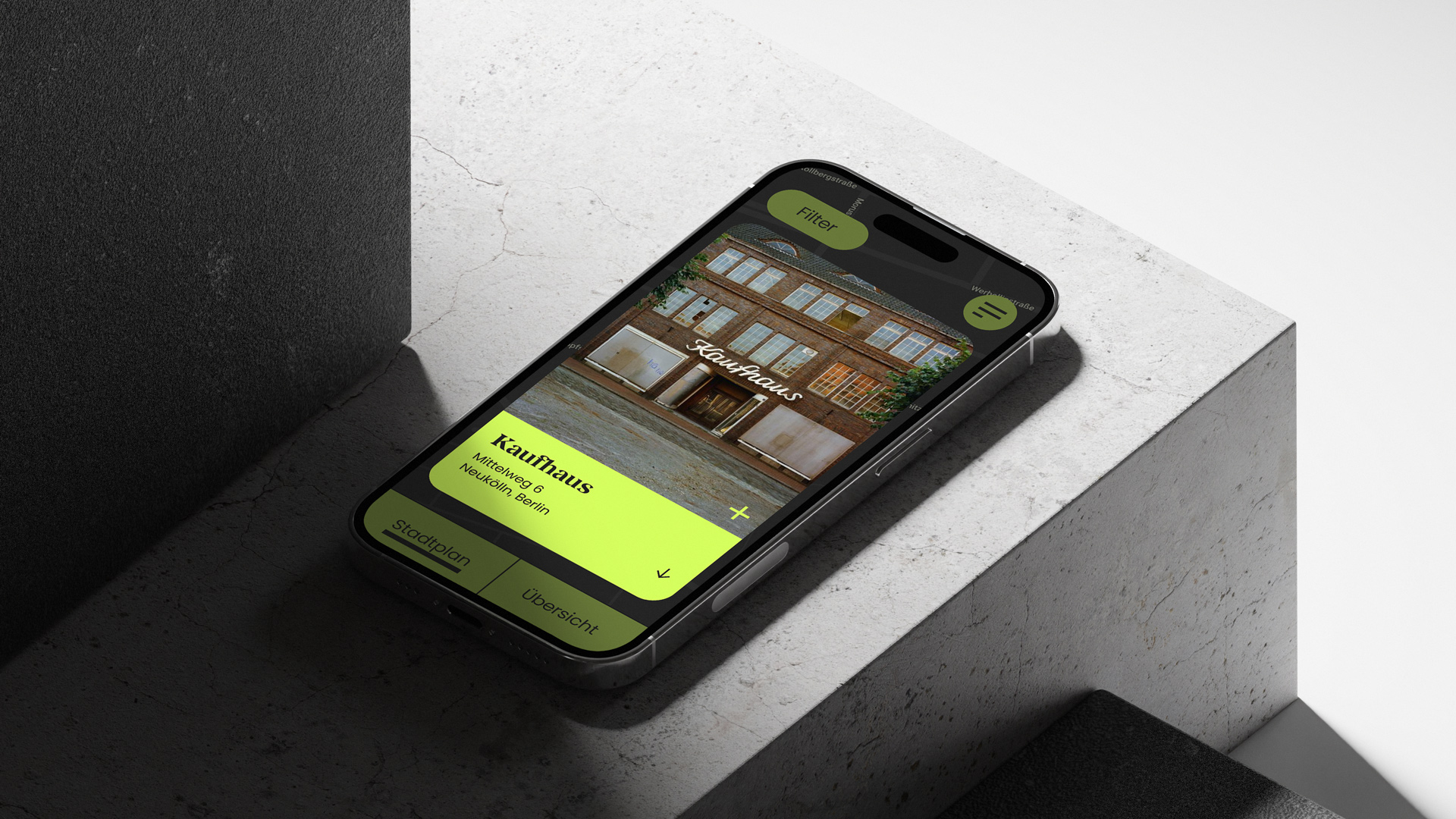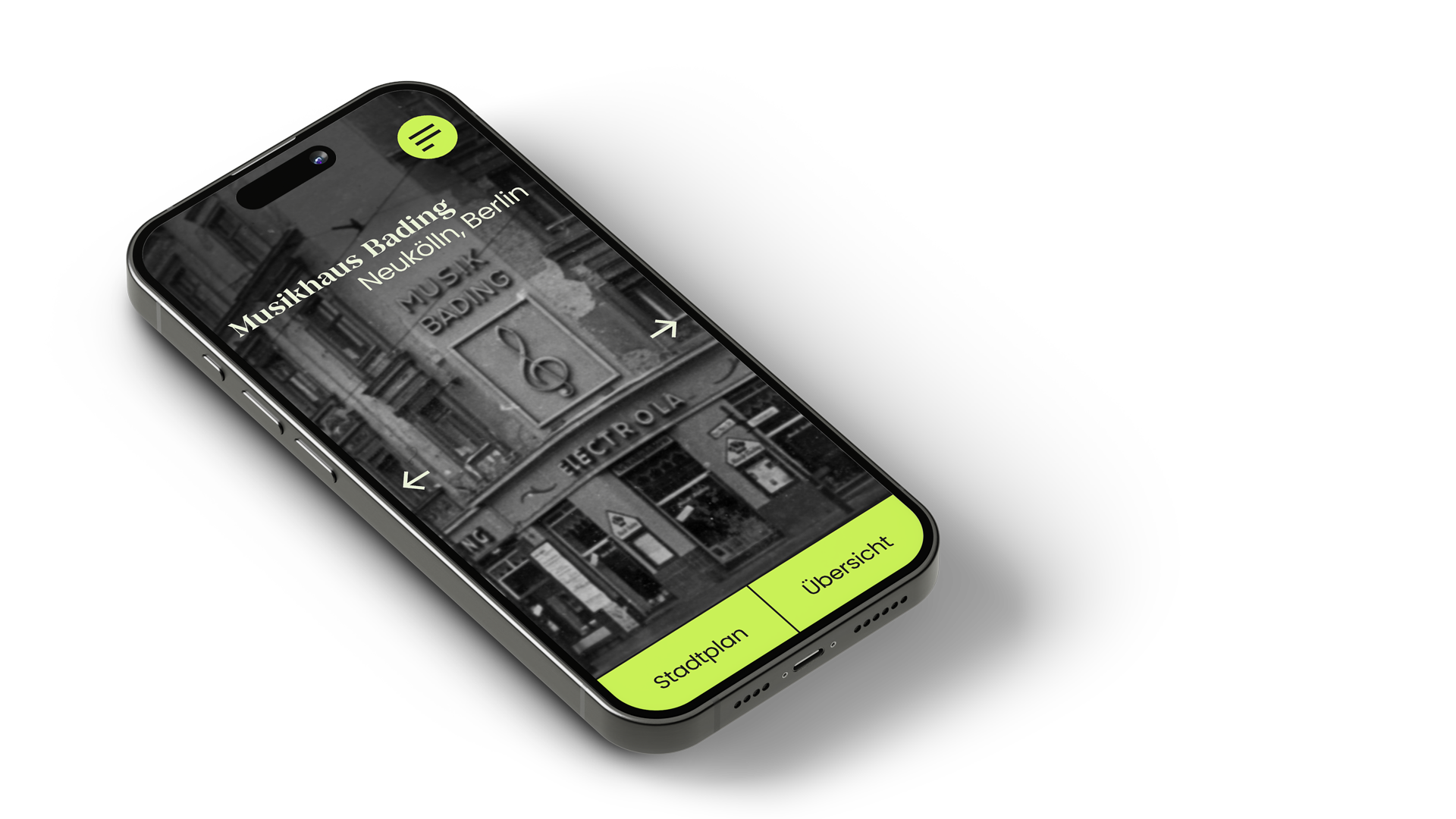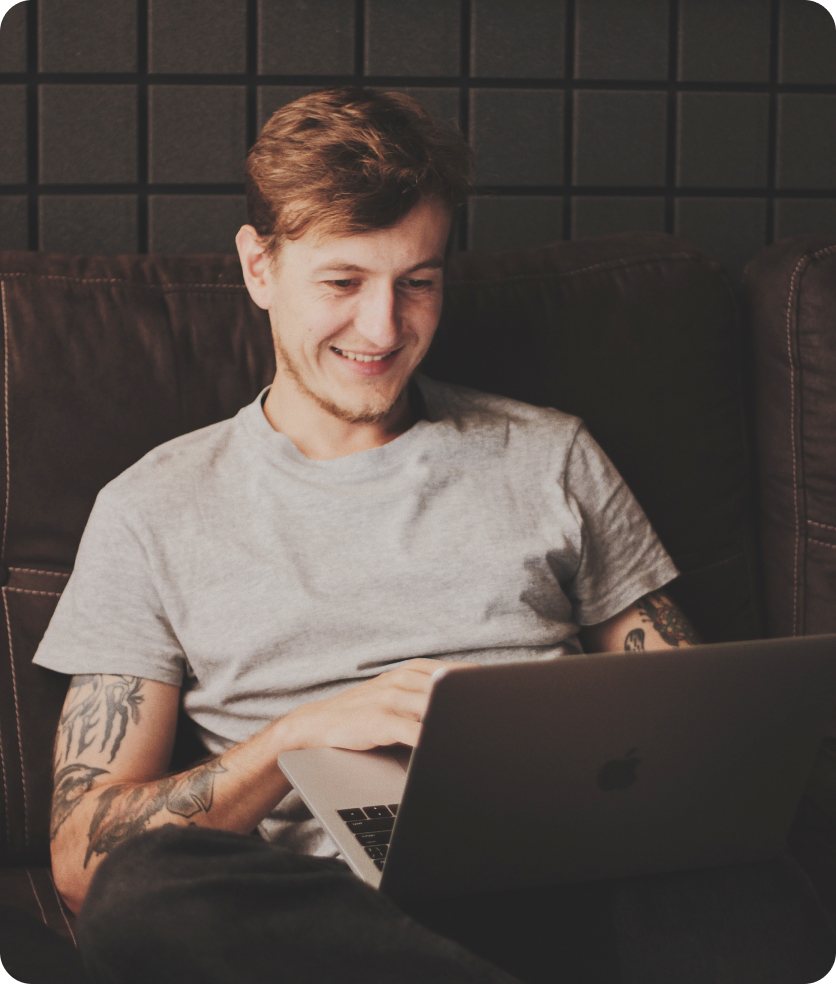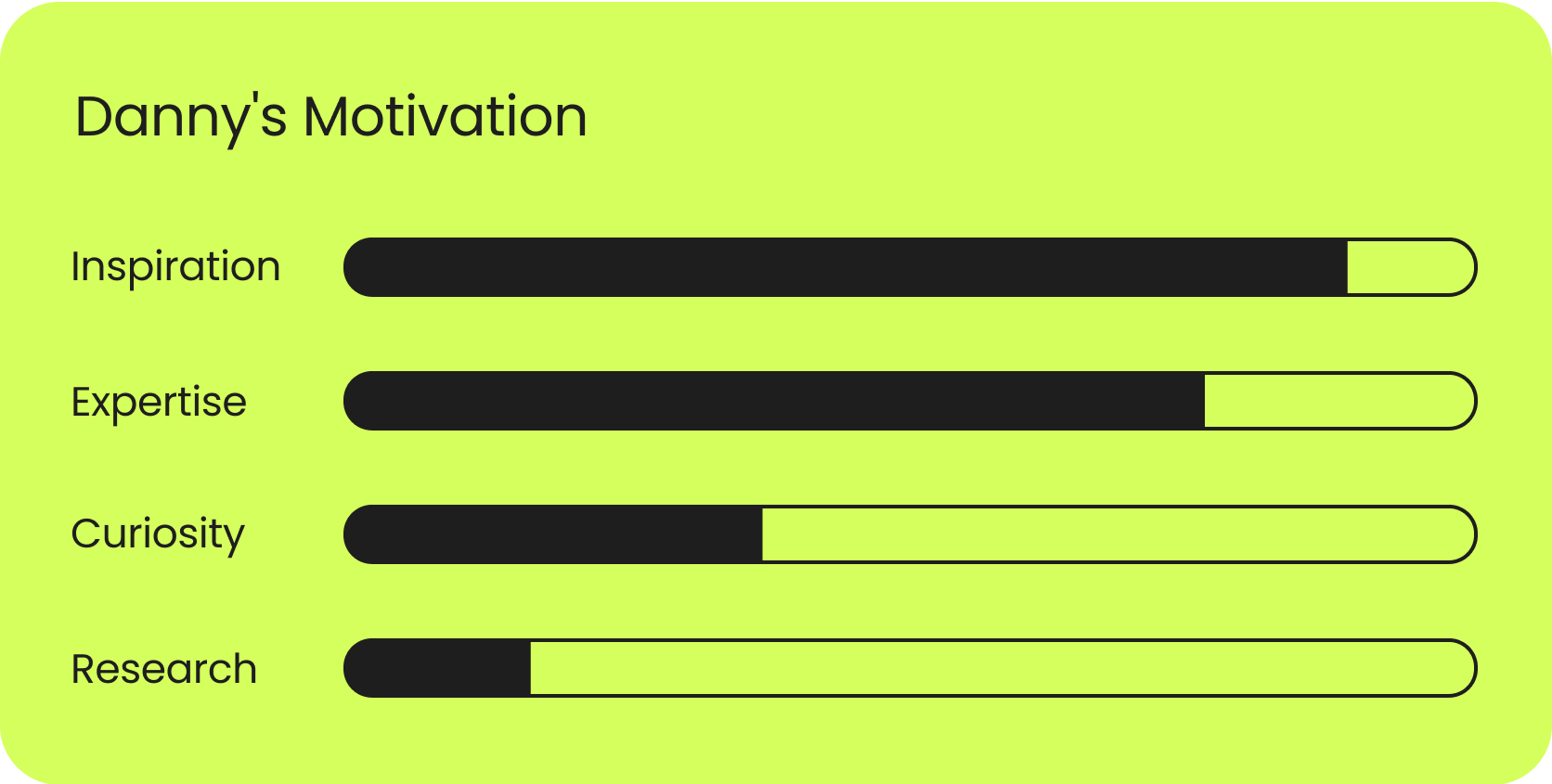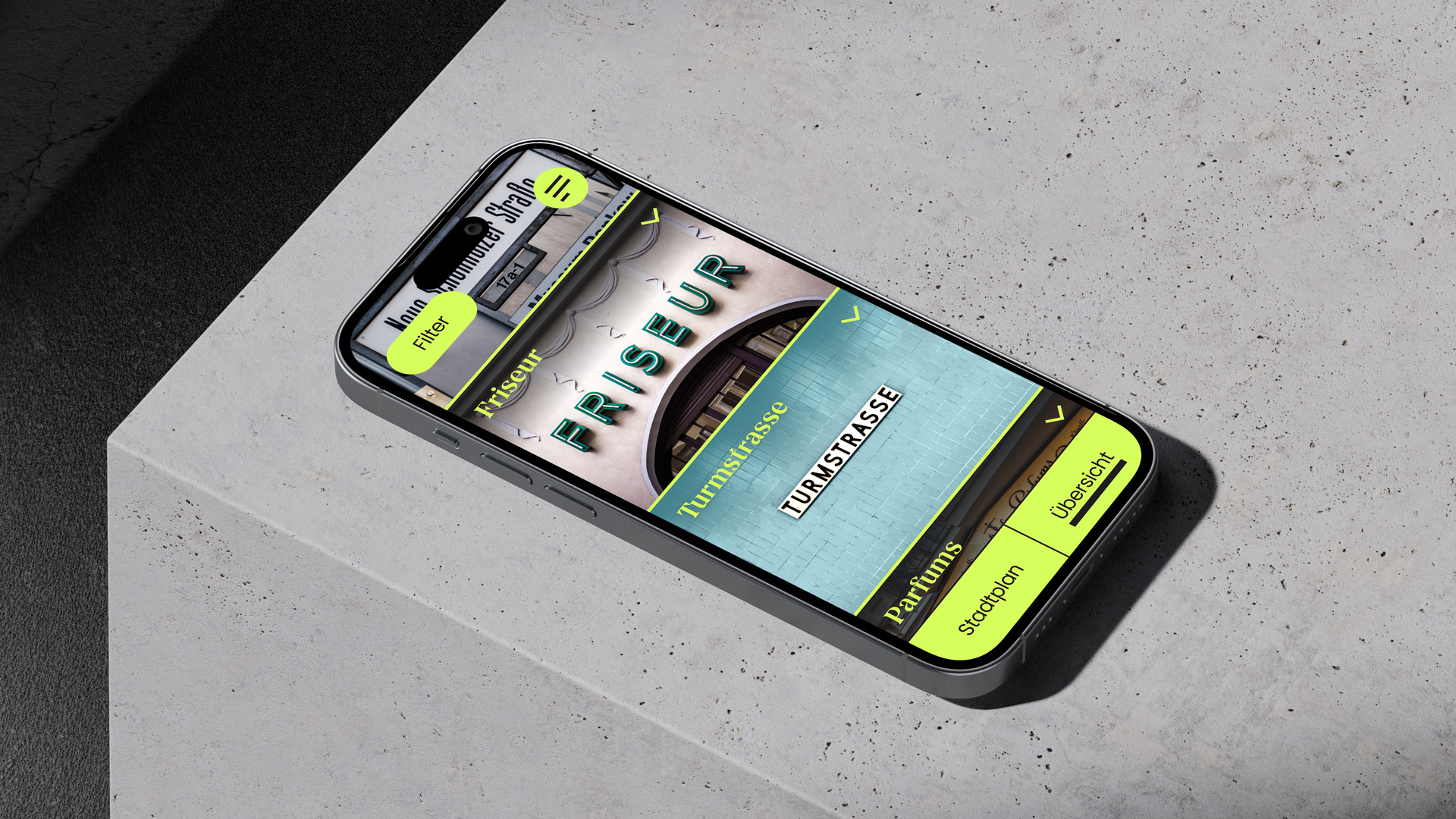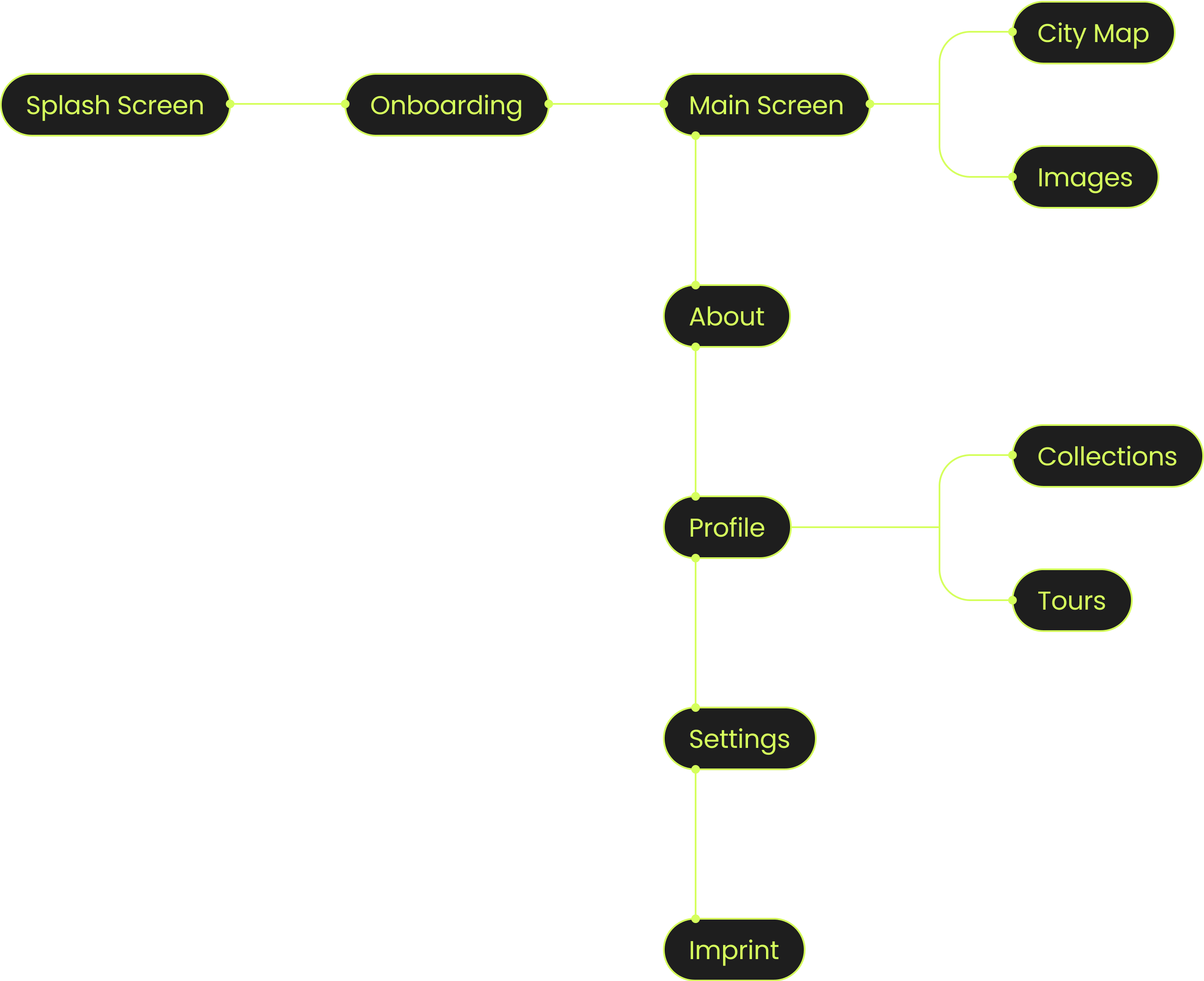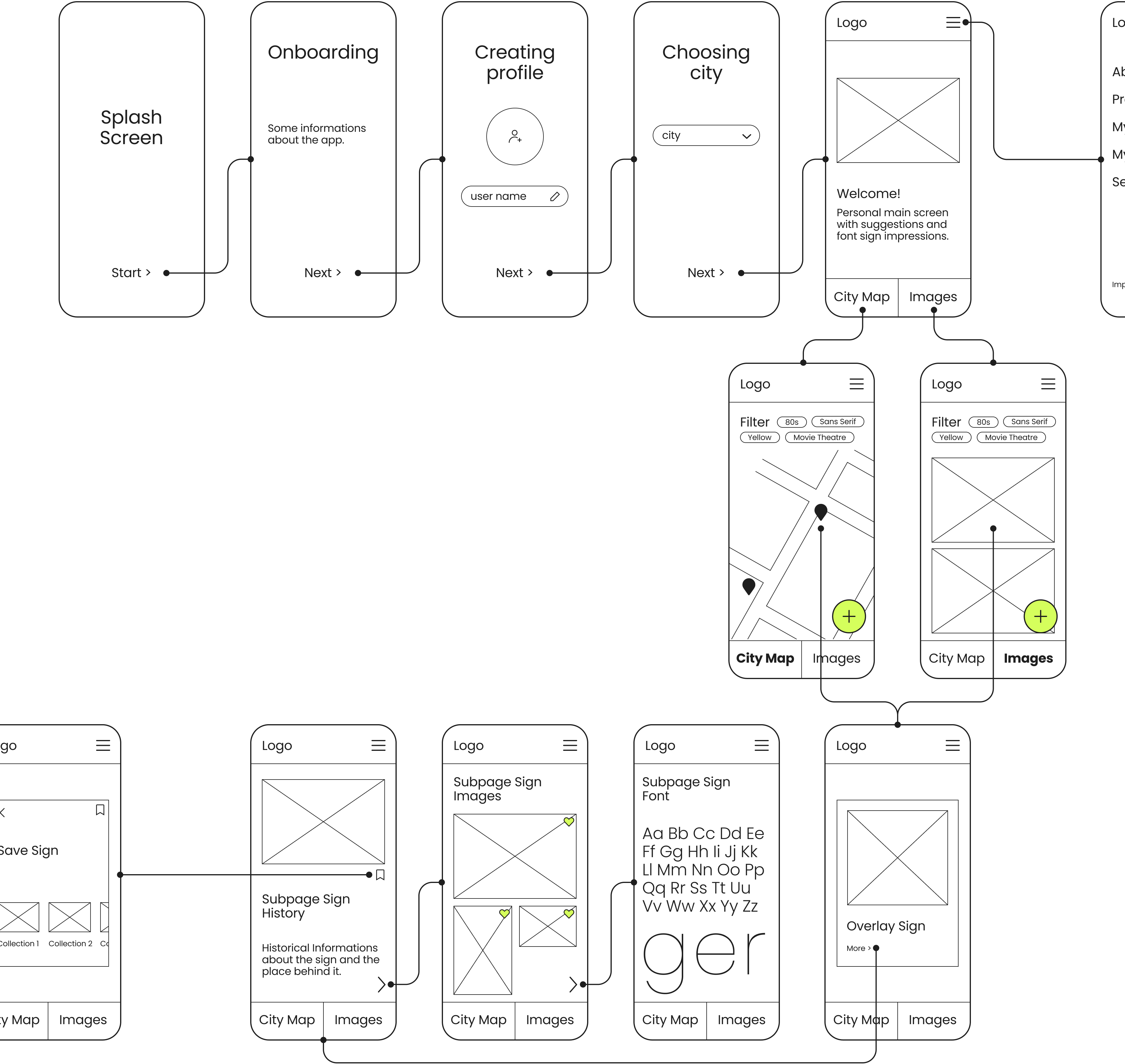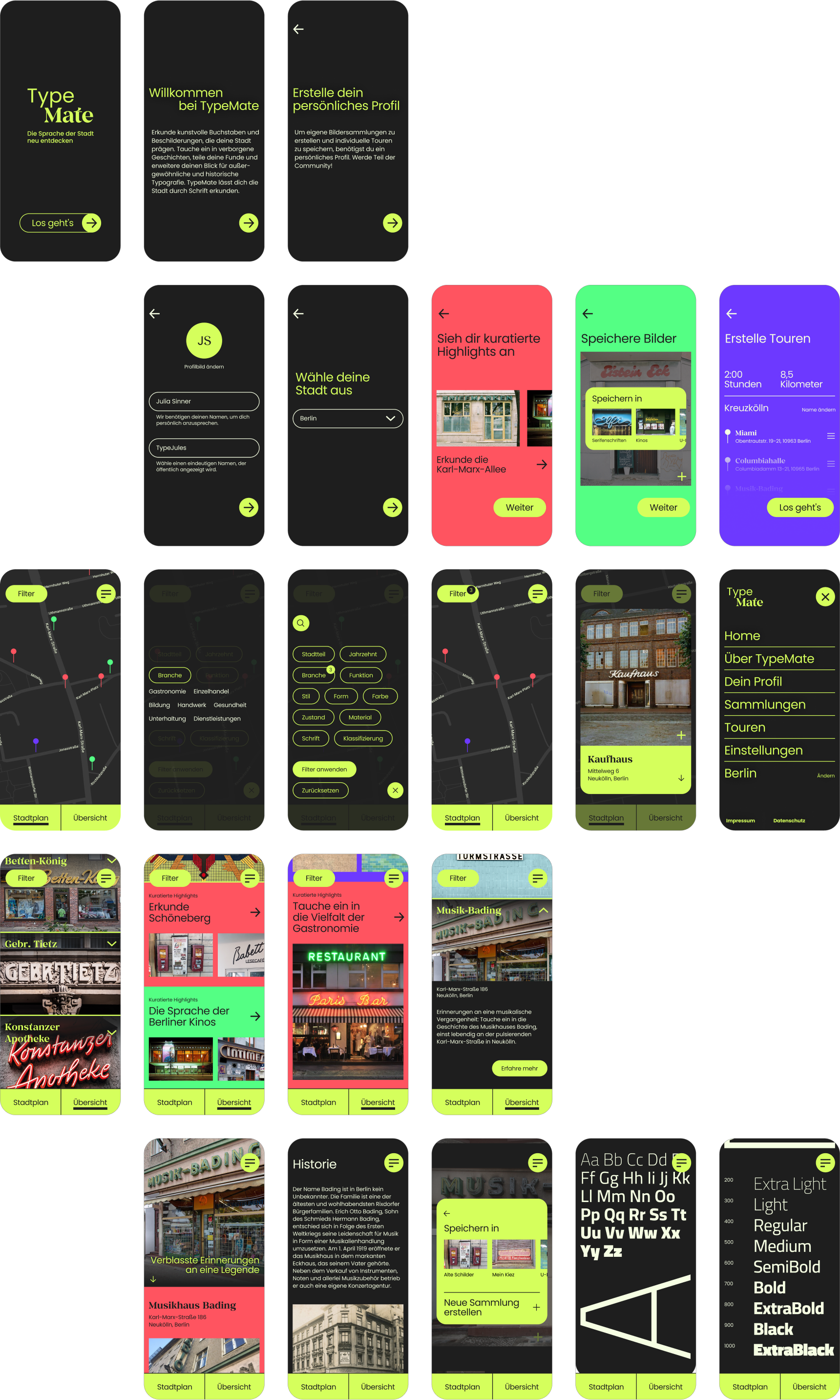TypeMate
Case Study

TypeMate is an application designed to explore typography in urban space. It provides users with the opportunity to discover the diverse range of fonts and signs that are part of our everyday life.
The app collects any enduring typography, including everything from street signs and former stores' names to current signage from cultural institutions. Users are provided with background information about the places, accompanied by high-quality photos, and insights into the fonts used in those settings.
The idea for the app emerged from my personal interest in signage from abandoned businesses whose names still adorn building facades. Each of these signs tells stories from the past, about people and their daily lives. I wanted to create an app to preserve these stories and share them with others.
The idea for the app emerged from my personal interest in signage from abandoned businesses whose names still adorn building facades. Each of these signs tells stories from the past, about people and their daily lives. I wanted to create an app to preserve these stories and share them with others.
3
weeks
20+
screens
25+
components
TypeMate is my capstone project from my UX/UI Design Bootcamp, which I completed in 2023. We were given a 3-week timeframe to work independently on our own project, covering everything from research to design. The app is in German as it was developed with Berlin as a prototype. Please note that the images and map data are fictional, with some sourced from the internet.
